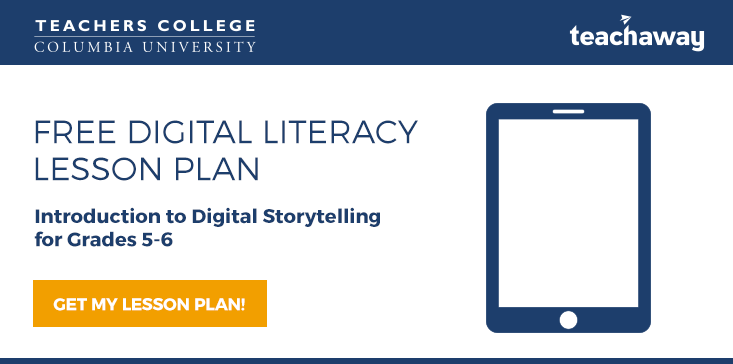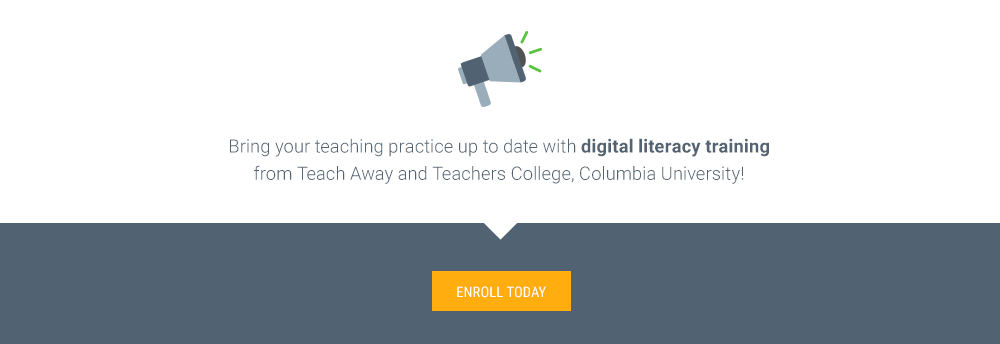The role of the international teacher in the 21st-century classroom is quickly evolving. If you’re an international teacher looking to stay ahead of the curve, you need to have a game plan up your sleeve.
And there’s no better time than this summer to seek out professional development options to help you brush up on your teaching skills, specifically in the biggest area of growth in international education: digital literacy.
Why digital literacy? A recent survey, carried out by the International Education Research Panel (a research collaboration between ISC Research and C3 Education), of more than 800 international schools around the world, indicates that the international schools worldwide are poised to make considerable investments in digital learning over the coming years.
Here’s a quick recap of the IERP survey findings:
-
41% of international schools currently use digital resources in the classroom.
-
A little under two thirds of international schools say they are likely to source and purchase new digital tools and technologies over the coming year.
-
59% of international schools believe that incorporating digital tools and technologies into their classrooms will help raise quality standards.
So far, this all sounds promising, but while it’s undoubtedly an exciting time to be working in international education, the study did identify a key stumbling block on the road to this new digital future.
What was the main barrier to technology use in classrooms, according to schools who took part in the survey? Right now, there is insufficient training in place for teachers looking to leverage digital technologies to enhance their teaching practice for the 21st century classroom.
The growth of international schools is, quite simply, staggering, Right now, an estimated 4.5 million students are being educated at international schools. And according to ISC Research, demand is set to rise even further – the number of international schools is set to double to more than 16,000 schools and 8.75 million students worldwide.
What does this mean for teachers looking to work internationally? It means a booming job market for qualified, internationally-minded educators – particularly those from the US, who are typically in high demand globally. However, experts, like Dr. Detra-Price Dennis from Teachers College, Columbia University, have pointed out the fact that many US teacher preparation programs continue to fall short when it comes to preparing teachers for the realities of the 21st century classroom.
As a result, under-trained teachers entering the international classroom for the first time often struggle to figure out how to teach effectively using digital technologies. And without adequate training, international teachers cannot create a learning environment that truly supports students in a way that fully prepares them for the digital world that awaits them.
Digital literacy – it’s not just for students
Digital skills are skills required for learning, work and for life in general. Without first becoming digitally literate, students who receive an international education will have little chance of benefiting from the advances in technology that are profoundly reshaping the workplace and the way they live their lives.
While digital learning is essential for international students, it is also vital for teachers working in the field. Digital tools and technologies, when used effectively, can allow international teachers to create curriculum and lesson plans in ways that can deepen student learning. International educators must work proactively in order to keep pace with the best practices in digital literacies and learning if they are to adequately prepare their students for success in the digital age.
How digital learning will shape the future of international education
Leaders in education worldwide recognize that besides having a transformative impact on society in general, technology also holds huge potential when it comes to promoting better student learning and preparing students for life after school. In an attempt to keep pace with the demands of an increasingly digital world, international schools are making a big push towards technology-driven learning.
At more and more international schools, technology usage is being integrated into the curriculum at various levels. Schools are investing considerable resources in digital tools and technologies in the classroom, whether it be introducing iPads into the classroom or adopting BYOD policies.
From the school’s perspective, the focus of technology use must always be directed towards the ultimate end goal: better student learning. In an increasingly crowded market, improved student outcomes is key to keeping schools competitive. When used correctly in the classroom, digital tools and technologies can facilitate international students in their thinking, creating, researching, communicating and collaborating skills.
Make digital literacy training your top PD goal this year
So, what does this all mean for aspiring as well as current international educators looking to gain a competitive edge? The research highlights shortage of teachers with relevant digital literacy training. With this skills gap comes an opportunity for job-seeking teachers to set themselves apart on their international teaching job application.
International teachers who can respond effectively to this opportunity are set to be very much in demand at schools globally. As an international educator, it’s up to you to be at the forefront of teaching with digital technologies, supporting digital literacy in your classroom so your students can continue to thrive in the global digital community.







